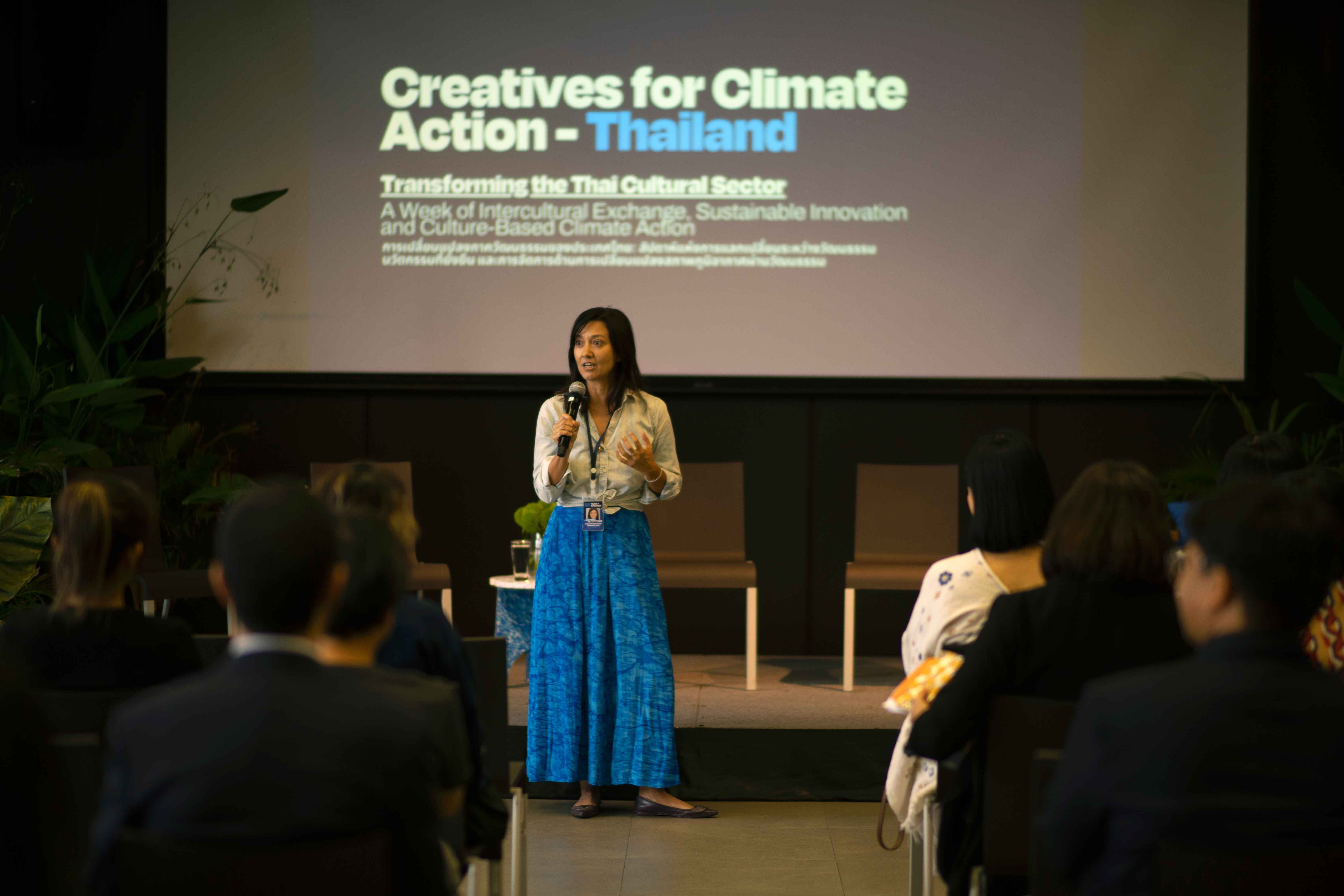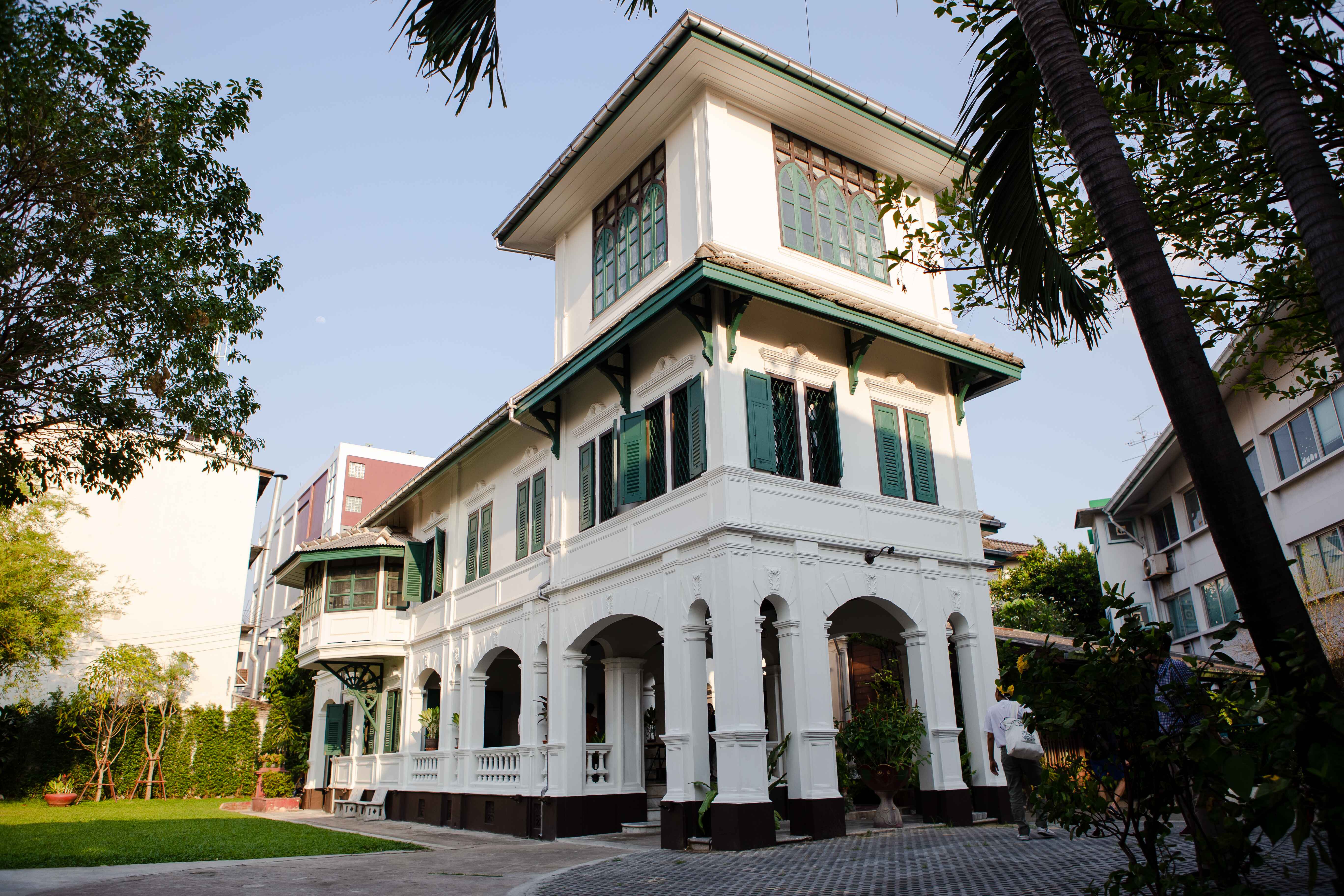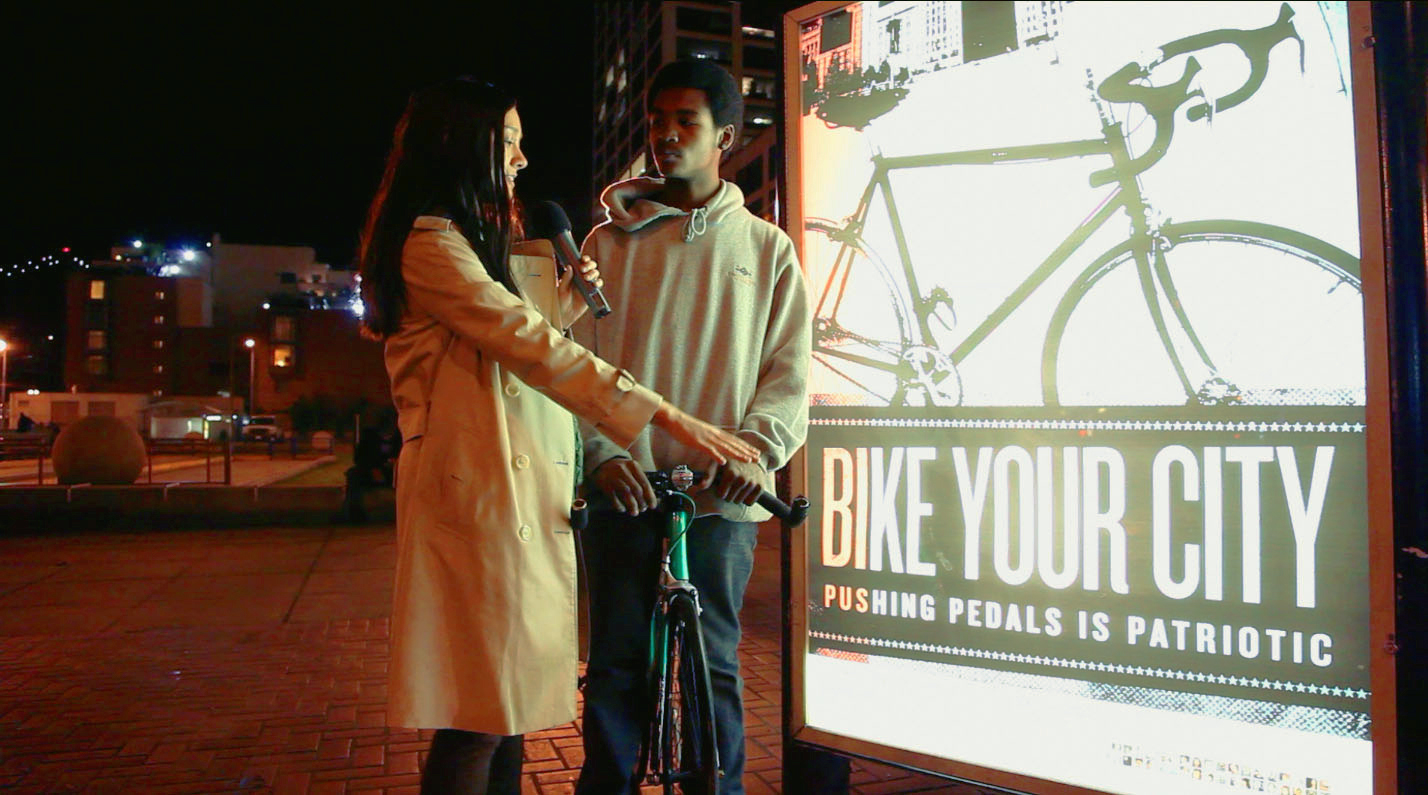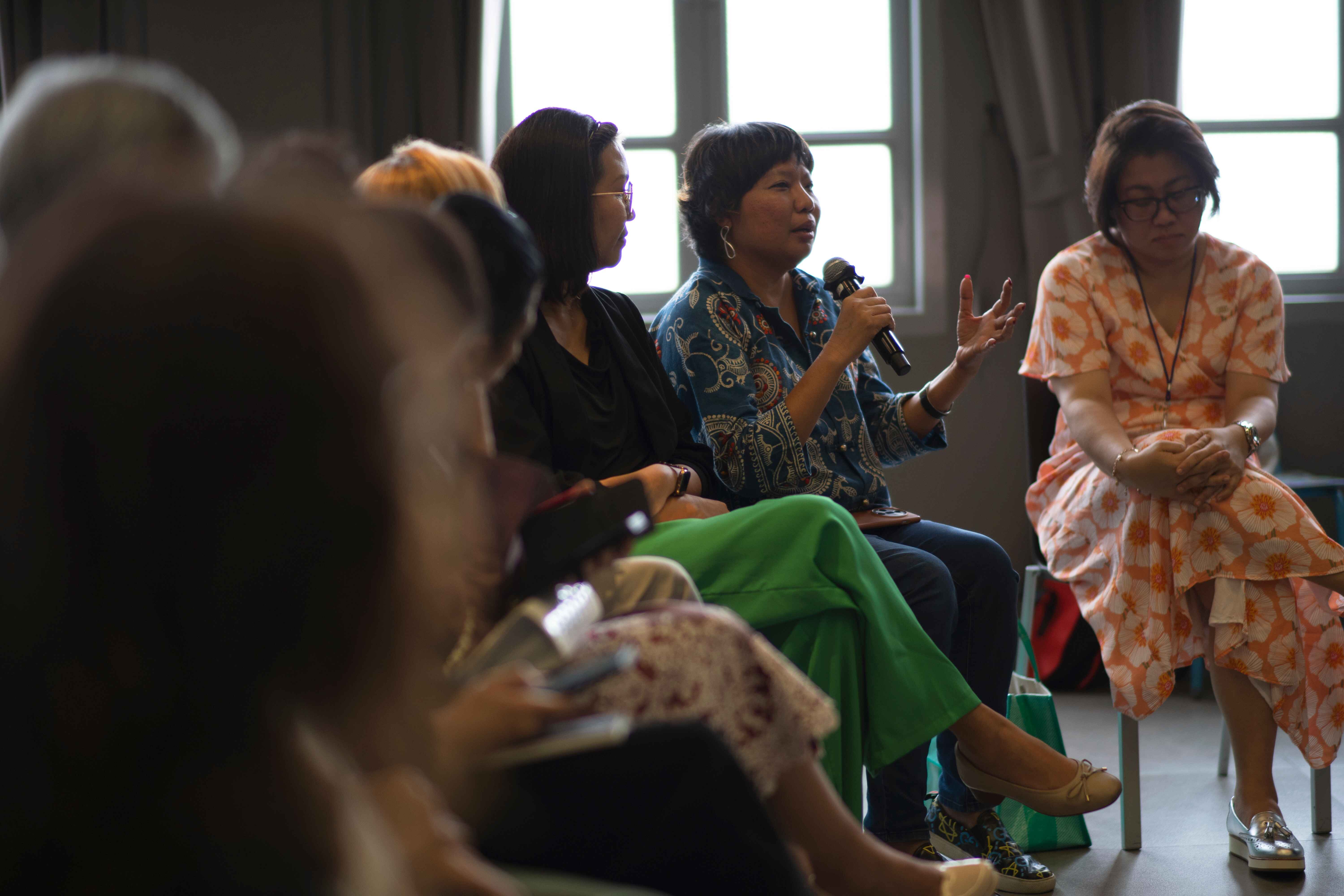Interview with Creative Migration

ASEF culture360 speaks with Creative Migration, to share about their focus on culture, climate and community and what is needed to support the cultural sector in a green transition. In this interview, they share the ideas that led to the creative of the organisation, and underpin their initiatives such as the Creatives for Climate Action - Thailand conference.
1. Creative Migration is a non-profit arts organisation, whose mission is to bring together cultural and climate diplomacy focusing on collaborative community building through intersectional practices. In layman’s terms, how would you explain cultural and climate diplomacy? How does this translate into the work of Creative Migration and what did you set out to achieve when Creative Migration was founded?
Creative Migration: Cultural and climate diplomacy harnesses creativity to influence and inspire action on climate issues, thus uniting people and nations toward global cooperation and meaningful environmental change. Creative Migration believes culture is a powerful tool for promoting understanding of complex environmental issues in ways that deeply resonate with diverse audiences. Arts and culture bridge the gap between awareness and action, playing a crucial role in addressing the climate crisis.
Our local and global networks connect artists, environmentalists, institutions, policymakers and thought leaders, bringing diverse perspectives to our initiatives. Bangkok 1899, our flagship hub, is located in a historic landmark that embodies the city’s vibrant past while providing a space where tradition meets innovation. Through artist residencies, exhibitions, workshops, performances and dialogues, we aim to nurture a robust, engaged network.
Creative Migration was established to use the power of art and culture to foster a sense of belonging and shared purpose, essential for addressing complex challenges such as climate change and cultural preservation. Our work centers on collaborative community building, using intersectional practices to inspire action and create a sustainable, inclusive future.

1. Bangkok 1899, a cultural and civic hub established by Creative Migration in Bangkok, Thailand © Creative Migration
2. It is interesting to know how Creative Migration encourages environmentally regenerative practices not only in your projects but also in the organisation’s day-to-day operations through a ‘Climate Policy’. Could you share more about what the ‘Climate Policy’ is and how you’re implementing it in your projects/events?
Creative Migration: Creative Migration's commitment to environmental sustainability began with POST NEW BILLS: The Story of Green Patriot Posters (2014). This documentary illustrates how art can influence public perception of ecological issues. POST NEW BILLS was the only American film accepted into the first edition of Project Green (2011), an initiative challenging filmmakers to create sustainable projects and incorporate environmental awareness into their content. This experience laid the foundation for Creative Migration’s evolution into cultural and climate diplomacy.
Sustainability is a core principle at Bangkok 1899. We conduct regular audits to analyse waste management practices and have recycling systems through local initiatives such as Precious Plastic Bangkok and Studio UpCircle. These partnerships ensure a wide range of materials are recycled and reused/repurposed until they reach the end of their lifespan before being replaced. The building’s insulation minimises energy losses, and natural light is used whereenever possible. LED lighting is employed throughout the building to save energy and overall consumption.
Additionally, we use rechargeable batteries for digital equipment, and internal temperatures are kept as consistent as possible to avoid spikes in air conditioning throughout the year. All air conditioning systems are powered down when not in use.
In partnership with Artists Commit, a climate action artist collective, we produce Climate Impact Reports (CIRs) for all major events, exhibitions and residencies at Bangkok 1899. Through this internal audit process, we developed an organisation-wide Climate Policy. This policy is also integrated into our artist and location rental contracts, meaning artists agree to prioritise eco-friendly materials and processes for projects, and event organisers must adhere to green guidelines for location rentals.

2. Frame from street interview on POST NEW BILLS: The Story of Green Patriot Posters © Creative Migration
3. What are some of the interesting considerations/challenges Creative Migration faced in developing sustainable cultural projects or events and how have you overcome them through the years?
Creative Migration: Introducing models of sustainability that focus on climate adaptation and mitigation isn’t always straightforward, as many concepts—like the United Nations Development Programme Sustainable Development Goals (UNDP SDGs) —can be complex and challenging for the general public to grasp. When organising events, it’s crucial to understand our audience, clearly explain our mission and its significance and ensure that attendees feel empowered and capable of making changes in their everyday lives. We aim to break down these concepts into relatable terms and connect them to real-world actions.
The most impactful changes often come from community-driven, DIY projects led by our partners.
These grassroots initiatives are created by people, for people, using language and approaches that resonate with their communities. This people-centric perspective is often missing from policy discussions or academic approaches to climate change, but it is precisely what we aim to highlight and support. Grassroots efforts can influence larger systems, and those with the least resources often demonstrate the most innovation. However, scaling these initiatives and securing adequate funding remains challenging.
To improve and make these systems more efficient, spaces like Bangkok 1899 and community programmes like Studio UpCircle must receive the proper support. I believe this shift is happening, and bringing people together at events like Creatives for Climate Action – Thailand can spark the right collaborations and drive meaningful change. We can help bridge the gap between local action and broader climate strategies by fostering these connections and supporting grassroots innovation.
4. In June 2024, Creative Migration organised Creatives for Climate Action – Thailand, a conference that brought together stakeholders from Europe and Thailand in the creative industry to promote sustainability and climate action in the cultural sector. Could you share more about how the idea for the conference came about and why this conversation is important for Thailand’s cultural sector?
Creative Migration: The Creatives for Climate Action – Thailand (CCAT) project was initiated by the EUNIC Cluster in Thailand, a network of Europe’s national cultural institutes and organisations engaging in cultural relations, with support from Alliance Française, the British Council, the Goethe-Institut, Camões - Instituto da Cooperação e da Língua, and the Embassies of Austria, Italy, Luxembourg and Spain.
EUNIC approached Creative Migration because of our intersectional practice, and we agreed on a collaborative knowledge exchange between Europe and Thailand. We then partnered with the Creative Economy Agency (CEA), a key institution driving sustainable growth in Thailand’s creative economy. Through initiatives like the Thailand Creative and Design Center (TCDC), the CEA promotes Thai creative excellence and measures the impact of creative industries on the economy.
The creative sector is increasingly influential in Thailand, contributing about 10% to the national GDP and employing 2% of the workforce, according to a 2024 University of Chiang Mai report. Beyond economic benefits, creative industries, especially festivals, play a crucial role in preserving Thailand’s cultural heritage. However, festivals and outdoor events have a significant ecological footprint, consuming large amounts of resources and generating substantial waste and carbon emissions. Thailand, alongside European countries, is committed to sustainable development under the Paris Agreement, aiming to reduce carbon dioxide emissions by 45% by 2030 and achieve net zero by 2050.
As the first initiative of its kind in the ASEAN region, CCAT introduces a Sustainable Toolkit that provides cultural and event professionals with practical methods to improve climate action and sustainable business practices. This project represents a unique opportunity for Thailand to lead by example, demonstrating how cultural continuity and authenticity can go hand-in-hand with climate leadership, inspiring the ASEAN region and beyond!

3. Susannah Tantemsapya, Founder and Executive Director of Creative Migration, speaking at Creatives for Climate Action - Thailand in Bangkok in June 2024 © EUNIC Cluster Thailand
5. One of the main outputs from the conference is the CCAT Toolkit, that will include sectoral information and resources in helping creatives in Thailand, their arts events and festivals become more sustainable. Please share with us what your vision for the toolkit is and what gaps do you hope for the toolkit to address in helping cultural organisations towards their green transition.
Creative Migration: The CCAT Toolkit is a user-friendly and comprehensive guide that supports Thailand’s festival and creative industry’s transition to green practices. This resource includes practical self-assessment tools, guidance and contact details of partners, such as sustainable vendors, venues, brands and consultants that can help event organisers to reduce their environmental impact.
Available in both English and Thai, this bilingual toolkit includes a downloadable PDF and, in the future, access to an online virtual database. It covers best practices, company profiles of sustainable suppliers (categories like Catering, Mobility, Location & Accommodation, Energy & Water, Equipment & Materials, Procurement & Waste, Communications, Social Responsibility, Locally Sourced Products, etc.), climate literacy and case studies from local Thai and European industry partners.
Creatives for Climate Action - Thailand has four primary objectives:
- Facilitating knowledge sharing between European and Thai cultural practitioners to exchange best practices for sustainability.
- Developing a detailed toolkit to create and promote sustainable events and simplify the necessary industry actions.
- Building networks by fostering new collaborations between EUNIC members and Thai stakeholders.
- Raising public awareness about regenerative practices through engaging and interactive sessions.
The long-term result will be a reduction in the environmental impact of the festival sector and improved progress towards the international goals for a livable planet. Additionally, we underscore the importance of intersectionality in dismantling siloed initiatives, thus advocating for a collaborative approach to leverage the creative industry’s bargaining power to promote sustainable practices among the general public and across sectors.

4. Participants at the Creatives for Climate Action - Thailand in Bangkok in June 2024 © EUNIC Cluster Thailand
6. What do you feel is most needed today to encourage and support the cultural sector in a green transition? In which way do you think policies, partnerships and collaborations can be beneficial in encouraging a stronger contribution of the culture sector to the climate crisis?
Creative Migration: To drive the cultural sector's green transition, we need a powerful shift where sustainability is woven into every creative process and operation. This goes beyond individual efforts—it's about a collective movement fuelled by smart policies, innovative partnerships and dynamic collaborations.
Policies can pave the way by offering financial incentives, tax benefits and awards for sustainable practices. Creating frameworks that encourage transparency in environmental impact can guide cultural organisations to make greener choices. When governments and institutions prioritise funding for eco-friendly projects, it makes the shift easier, especially for smaller organisations that might otherwise struggle.
Equally important are partnerships and cross-sector collaborations. By teaming up with environmental experts, tech innovators and other industries, the cultural sector can unlock new tools and strategies for reducing its carbon footprint, from sustainable materials to energy-efficient techniques. These collaborations can transform the sector into a leader in climate action, using its unique ability to tell compelling stories, inspire change and influence how we engage with both culture and the environment. This collective effort can make sustainability a shared vision, turning the cultural sector into a powerful force for climate action.

5. Participants at the Creatives for Climate Action - Thailand in Bangkok in June 2024 © EUNIC Cluster Thailand
Cover Image: Susannah Tantemsapya, Founder and Executive Director of Creative Migration, speaking at Creatives for Climate Action - Thailand in Bangkok in June 2024 © EUNIC Cluster Thailand
Explore the Creatives for Climate Action - Thailand (CCAT) 2024 Toolkit, to know more about integrating sustainability and climate action into cultural event planning and implementation.
To find out more about Creative Migration, visit their website here.
Meet the team behind Creative Migration:
Susannah Tantemsapya is the Founder & Executive Director of Creative Migration and Bangkok 1899, based in Los Angeles and Bangkok. Susannah is part of the Convening Team for the UNFCCC’s Entertainment and Culture for Climate Action (ECCA) initiative, a Non-Profit Advisor for the Entertainment + Culture Pavilion, on the Advisory Council of the Hollywood Climate Summit, a Global Ambassador & Fellow at the Royal Society of Arts (RSA), on Tatler’s Gen.T Asia List (2019), a Founding Member of Soho House Bangkok and an advisor for Brackish Water Los Angeles (Getty: Pacific Standard Time 2024). She is the Producer of Creatives for Climate Action - Thailand (CCAT).
Lidia Vajda is a cultural project coordinator and communications specialist based in Bangkok. She currently strengthens the Creative Migrationteam as a Communications & Project Manager, as well as Project Coordinator and Toolkit Consultant for CCAT.
What do you want to see more of on ASEF Culture360? You can let us know until 31 October: fill in the survey here!
